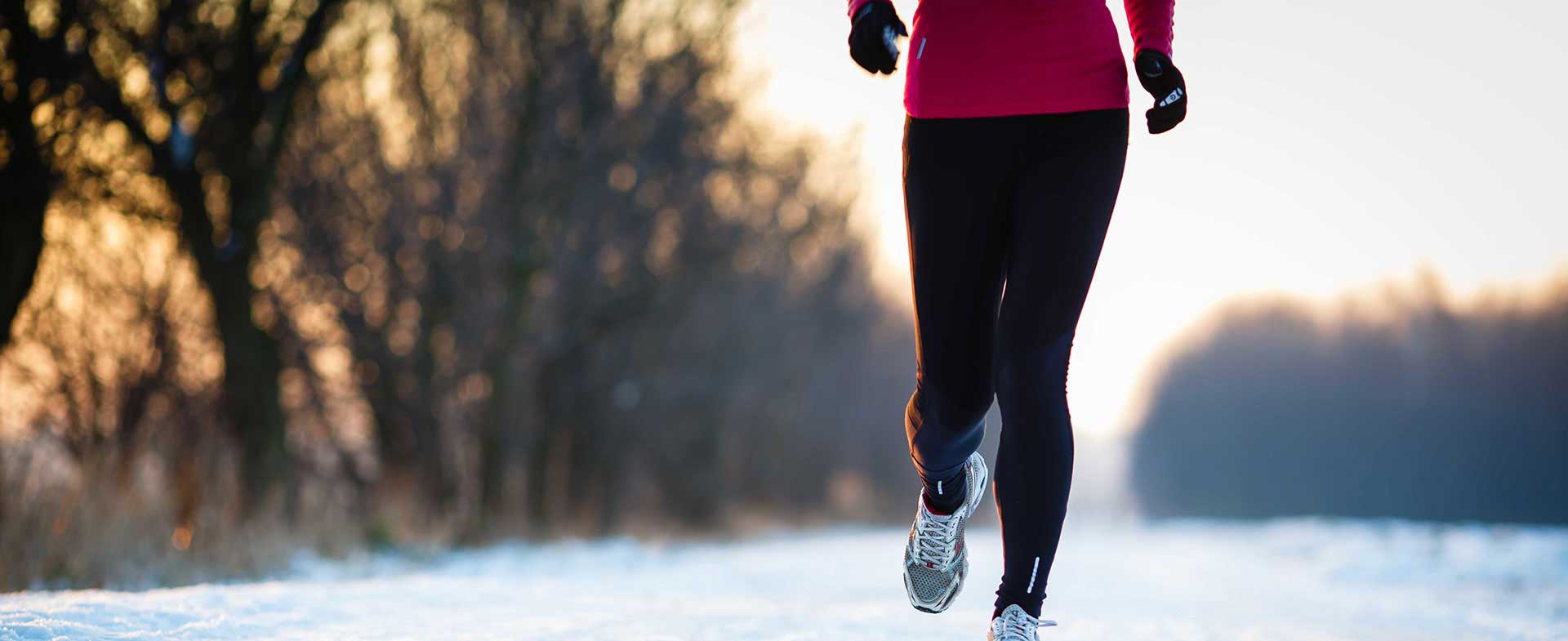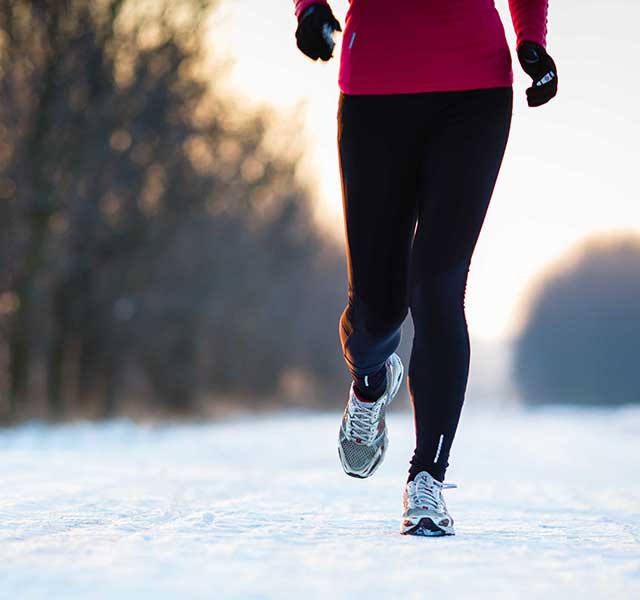Exercising outdoors in any season has a number of added benefits. It reduces tension and stress, boosts energy, increases vitamin D, connects you with nature--and saves money on expensive gym fees. That said, the winter months can pose some unique health and safety hazards.
Here are five tips to maximize your workout and reduce your risk of injury during the winter.
1. Check the weather.
If the temperature is sub-zero or there’s a severe windchill, you might rethink your workout for the day. Know the signs and symptoms of frostbite and hypothermia. Plan your workout so the wind is at your back during the second half. That way, you’re less likely to get chilled because your exposed, damp face will be heading in the same direction as the wind. Here's how adjust your workout to limit the risks of frostbite and windburn depending upon the windchill:
- Windchill of 30 - 35 degrees F: Be aware of possible cold injuries. Don't stay outside for more than 2 hours.
- Windchill of 25 - 15 degrees F: Cover all exposed skin as much as possible. Rewarm every 20 minutes for at least 10 minutes at a time. Don't stay outside for longer than 60 minutes.
- Windchill of 15 - 0 degrees F: Consider limiting or modifying your activity to reduce exposure. Rewarm every 15 minutes for at least 10 minutes at a time. Don't stay outside for longer than 30 minutes.
- Windchill of less than 0 degrees F: Don't exercise outside. If possible, move it inside or reschedule for a later date.
2. Layer up.
Because exercise generates heat, it’s helpful if you can peel off a layer of clothing as your body warms up. The key to staying dry and comfortable is picking the right material for each layer. Start with a synthetic material like polypropylene, which keeps sweat away from your body. Conversely, cotton material stays soaked when it gets wet. Add a layer of wool or fleece for insulation, then top it off with a waterproof outer layer.
3. Protect your head, hands and feet.
When the temperature drops, your body protects itself by sending blood to your core to keep your internal organs warm. But that leaves your head, hands and feet vulnerable to the cold. Consider wearing a pair of polypropylene glove liners underneath fleece or wool mittens. Once the sweat kicks in, you can remove the mittens and stick with the gloves. A hat is a must because the head is where 30% of the body’s heat loss takes place. A loose scarf over your nose and mouth is also recommended to protect your lungs. Grip covers for your shoes can provide traction on snow and ice to reduce your risk for slip and falls.
4. Go reflective.
Wearing reflective gear allows other people on the road to see you, especially with winter’s limited daylight hours or on especially gray or snowy days.
5. Hydrate.
You may not feel thirsty in the cold, but it’s still important to stay hydrated with water. Replenish your fluid intake by drinking before, during and after your workout to protect your body from injury and to stay warm.
To find an athletic trainer and schedule an appointment call 313-651-1917 or email sportsperformance@hfhs.org. To learn more about the sports performance program at Henry Ford Health, visit henryford.com/sportsperformance.
Nick Parkinson, M.Ed., AT, ATC, TSAC-F, Supervisor of Athletic Training with Henry Ford Sports Medicine, also leads Sports Performance training at the William Clay Ford Center for Athletic Medicine. Learn more about Nick.



